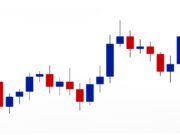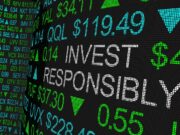We all witnessed the pandemic wreak havoc, and its effects have been residual. Many financials are in a slump today, and some are due for a rebound. How do we find the best of these to invest in? There isn’t much of an objective answer other than utilizing the tools that have helped do the job for others. For example, long-term solid performance is essential. The financial sector’s profits have expanded much quicker than the broader economy over the last 30 years, enabling financial businesses to pay above-average shareholder dividends and generate exceptional pricing multiples.
There is also more regulation than before 2008’s “Great Recession.” During that time, the inherent flaws in the industry revealed themselves. There’s also a decidedly greater opportunity for government aid, mainly because the sector predicts global economic growth (or decline). Financial institutions should always be able to depend on unique assistance in times of economic downturn. Banks are considered the backbone of the financial sector and, in some ways. There are commercial banks, which typically engage with people and small companies, and investment banks, which work with huge organizations and high-net-worth shareholders. Some banks successfully engage in both.
Let’s look at three bank stocks, each down year-to-date, leaving tremendous potential upsides for investors to enjoy along with their dividend payments. The economy’s brightest minds have agreed that we should buy these now and hold on:
Citizens Financial Group Inc (CFG)
Citizens Financial Group, Inc. (CFG) is a commercial and retail bank serving consumers, small and medium-sized businesses, middle-market enterprises, large corporations, and institutional clients across the U.S. Consumer Banking and Commercial Banking are the two main divisions under which CFG works. In April 2014, CFG changed its name from RBS Citizens Financial Group, Inc. to Citizens Financial Group, Inc. CFG was founded in 1828, and its headquarters are still in Providence, RI, today.
CFG is a prime candidate to exemplify “buying the dip,” as its stock is down by roughly 19% YTD. Although earnings for CFG were hit and miss in 2022, it has YOY growth in critical areas and impressive TTM (trailing twelve-month) numbers. During that time, with a growing market cap of $15.5 billion, CFG brought in revenue of $7.16 billion, EPS of $4.09 per share, a net profit margin of 25.84%, and a debt-to-equity ratio of 31.11%. CFG has a P/E of 7.8x and a forward P/E of 6.35x, with forecasted 1-yr growth of 23.3% — 3-5 years at 8.3%. CFG has a dividend yield of 5.27%, with a quarterly payout of 42 cents ($1.68/yr) per share. Analysts who offer yearly price estimates assign CFG a median price target of $47, with a high of $57 and a low of $38; this leaves room for an upside ranging from 46-79%. Given what we’ve gone over, it makes sense that analysts love CFG and tell us to buy now and hold.
Wells Fargo & Co (WFC)
Wells Fargo (WFC) is a well-known, widely used bank. Via its brick-and-mortar branches, website, and other channels, WFC serves consumers in all 50 states, D.C., and overseas. WFC offers investment options, traditional banking, mortgage, vehicle, and commercial loans. WFC provides savings and checking accounts, debit and credit cards, and lending for small businesses. WFC also offers fiduciary services, financial planning, and private banking. WFC provides financial solutions to corporations through a plethora of financing options. WFC was founded in New York, NY, by William Fargo in 1852.
WFC is down slightly YTD by 2.75% and is closer to the bottom end of its 52-week price range. With a whopping market cap of $152.4 billion and $27 billion in cash flow, WFC wears its money proudly; we can see for ourselves in its TTM numbers: WFC has shown $54 billion in revenue, a $3.14 EPS, a P/E of 12.77x, a forward P/E of 8.46x, and a P/S ratio of 2.42x. Having recently beaten analysts’ projections on quarterly EPS by 32.63%, WFC boasts $12 billion in net income from the same period. For the present quarter, WFC shows sales of $20.2 billion at $1.14 per share. WFC has a dividend yield of 2.99%, with a quarterly payout of 30 cents ($1.20/yr) per share. Analysts have marked WFC with a median price target of $52, with a high of $65 and a low of $45. The high mark of the range represents a handsome price upside of just over 62%, leaving us a clear path to its revelatory buy and hold rating.
HDFC Bank Ltd (HDB)
HDFC Bank Ltd (HDB) is a global bank that provides retail banking and wholesale commercial banking with investment services as an option. Net income from its business investments, money market borrowing, lending, and derivative contract transactions make up HDB‘s Treasury division. HDB‘s “Retail Banking” operates more traditionally, focusing on gaining and keeping satisfied customers. HDB, as a wholesaler, provides loans and transaction services to large, medium-sized, and government-related businesses. HDB‘s “Other Banking Operations” division offers debit and credit cards and related goods and services. HDB was founded in August of 1994 in Mumbai, India, where its headquarters still sit.
HDB, down by 5.9% YTD, is still one of the most lucrative global-scale banks in the financial sector. HDB has had no problem beating analysts’ earnings predictions for many consecutive quarters, most recently surprising on EPS and revenue by margins of 2.34% and 1.82%, respectively. With a comfortable beta figure of 0.76 and a market cap of nearly $120 billion, HDB shows YOY revenue growth of 22.35%, EPS growth of 19.37%, and net income growth of 19.89%. HDB, for the current quarter, offers revenue of roughly $4 billion, with an EPS of 80 cents per share, and it has a 3-5 year EPS growth rate of 14.5%. HDB has a modest dividend yield of 0.90%, with a yearly payout of 58 cents per share. Analysts who offer annual pricing projections give HDB a median price target of $69.96, with a high of $80.15 and a low of $58.85. This gives HDB a potential upside, or price increase, of 24.5%. Analysts concede that we investors should capitalize on this opportunity. Buy now and hold.
Read Next – [Fed Control] 4 Urgent Steps to Shield Your Money
The Federal Reserve is about to acquire new powers to track and even control your money
Starting as soon as May 2023!
The Fed calls its new program FedNOW.
I call it Fed Control.
Why? Because it not only aims to centralize private payments systems — like Apple Pay, PayPal, Venmo, Zelle and others — for the sake of making them “more efficient” …
It also could give the Fed direct surveillance access — and ultimately control — over nearly all banking transactions by individuals and private enterprise.
Finding it hard to believe our government would snoop around in your personal transactions? Really?
Then just remember what the NSA and FBI did under their so-called PRISM program that spied on the personal emails, chats and videos of millions of Americans who were not even suspected of any crime or bad behavior!
FedNOW will give the Federal Reserve access to data that is even more critical — on virtually every penny you spend, receive or transfer.
Fortunately, there are four basic steps you can take to protect your money.
I lay them out in my free emergency broadcast.
Just click here, and my presentation should start playing on your screen immediately (no registration required).













